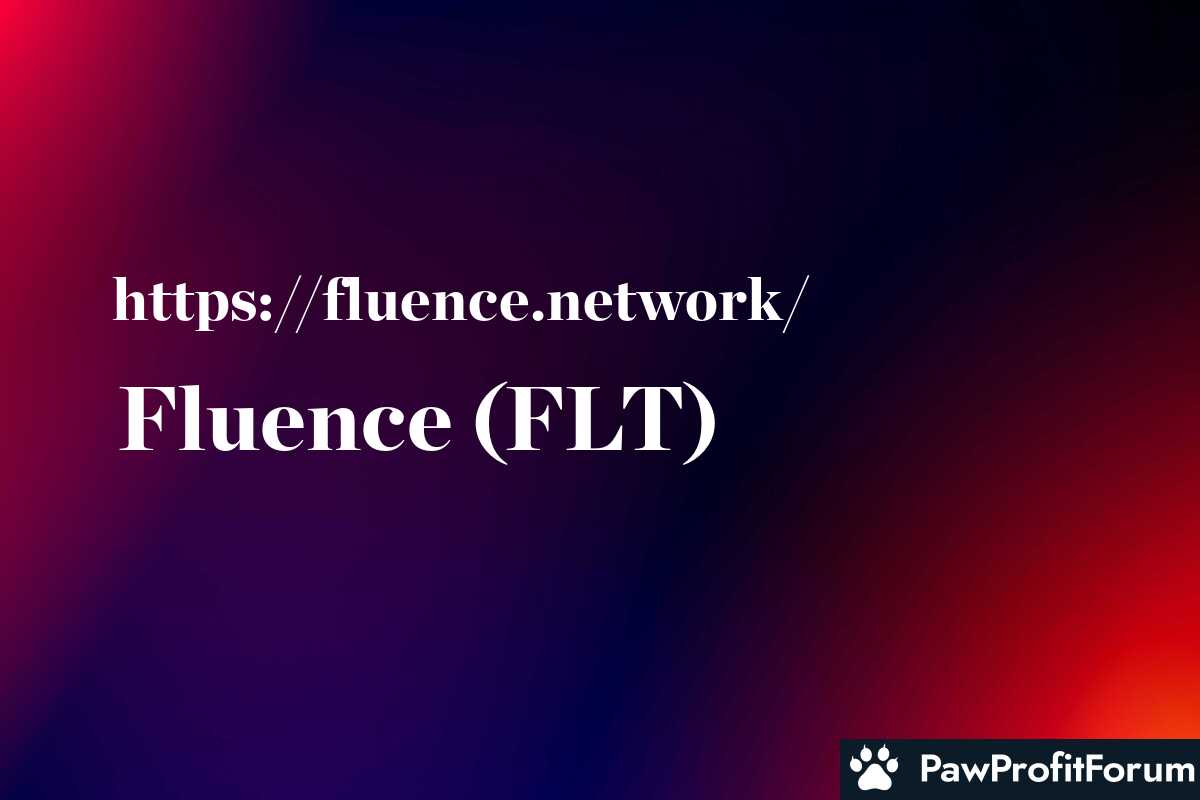What Is Fluence?
Fluence is the first decentralized “Cloudless” computing platform, providing an open alternative to the giant internet cloud monopolies. Fluence is up to 80% cheaper than cloud providers and is both resilient and verifiable. Fluence assembles excess compute capacity from top tier data centers around the world into a global, always-on DePIN network that is suitable for running a wide range of applications. The platform is open, allowing users to change providers easily, ensuring that prices stay low and service levels are high.Fluence was founded in 2017 and launched mainnet in 2024. It is governed by a DAO in the form of a Swiss Association.
What Is Fluence?
Fluence is the first decentralized “Cloudless” computing platform, providing an open alternative to the giant internet cloud monopolies. Fluence is up to 80% cheaper than cloud providers and is both resilient and verifiable. Fluence assembles excess compute capacity from top tier data centers around the world into a global, always-on DePIN network that is suitable for running a wide range of applications. The platform is open, allowing users to change providers easily, ensuring that prices stay low and service levels are high.Fluence was founded in 2017 and launched mainnet in 2024. It is governed by a DAO in the form of a Swiss Association.
What is FLT token?
FLT is the platform’s native utility and governance token used for: * Staking by compute providers for each added CPU to guarantee network reliability * Rewarding compute providers * Voting in the DAO governance, including on protocol upgrades and treasury managementHow Many FLT Coins Are There in Circulation?
FLT token launched in February 2024 with 1 billion tokens created at genesis. In its initial month, the supply is capped at 5% for the liquidity bootstrap pool. An additional 5%, the developer reward pool, will unlock two months after the claim date, beginning on April 27th. Compute providers will earn tokens by contributing capacity to the network, for which they will be required to stake FLT tokens. Starting February 2025, approximately 45% of all tokens held by investors and the team will unlock daily until February 2026.Who Are the Founders of Fluence?
Fluence founders are Evgeny Ponomarev, Dmitry Kurinskiy, and Tom Trowbridge. Evgeny and Dmitry are seasoned developers and entrepreneurs, with extensive expertise in blockchain and software engineering for over 15 years. Tom Trowbridge helped found Hedera Hashgraph (HBAR) and was president since inception.Where Can I Buy FLT?
FLT is available on two exchanges as of March 2024: Bybit Gate.ioWhat is Fluence?
Fluence (FLT) stands as a decentralized serverless platform and computing marketplace, powered by blockchain economics. It offers a global, permissionless, scalable, and secure alternative to centralized cloud computing platforms. By integrating both Web2 and Web3 data storage and management, Fluence provides tools for developers to quickly build and run decentralized infrastructure networks.Founded in 2017, Fluence launched its mainnet in 2024 and is governed by a DAO in the form of a Swiss Association. The platform assembles excess compute capacity from top-tier data centers worldwide into a global, always-on DePIN network, suitable for a wide range of applications. This open structure allows users to switch providers easily, ensuring competitive pricing and high service levels.
The FLT token serves as the platform’s native utility and governance token. It is used for staking by compute providers to guarantee network reliability, rewarding these providers, and voting in DAO governance, including protocol upgrades and treasury management. The token launched in February 2024 with an initial supply of 1 billion tokens, and its distribution includes a liquidity bootstrap pool and a developer reward pool.
Fluence's mission extends beyond computing, aiming to create a sustainable future through energy storage products and services while promoting awareness and safety of psychedelic therapies. The platform's strong and active community supports this multifaceted mission.
What is the technology behind Fluence?
Fluence is a groundbreaking decentralized, serverless computing platform and marketplace that offers a compelling alternative to traditional centralized cloud computing services. At its core, Fluence leverages blockchain technology to create a global, permissionless, scalable, and secure network. This decentralized approach ensures that the platform is resilient and verifiable, providing a robust infrastructure for a wide range of applications.The blockchain on which Fluence operates is designed to integrate both Web2 and Web3 data storage and management platforms. This integration allows Fluence to harness the best of both worlds, offering users the flexibility and efficiency of modern web technologies while maintaining the security and decentralization inherent to blockchain systems. By assembling excess compute capacity from top-tier data centers worldwide, Fluence forms a global, always-on network that is both cost-effective and reliable.
Security is a paramount concern in any decentralized system, and Fluence addresses this through several mechanisms. One key feature is the use of staking by compute providers. These providers must stake FLT tokens for each added CPU, which acts as a guarantee of network reliability. This staking mechanism not only incentivizes honest behavior but also deters malicious actors, as they would stand to lose their staked tokens if they attempted to disrupt the network.
Moreover, Fluence employs a decentralized autonomous organization (DAO) for governance, which is in the form of a Swiss Association. This DAO allows for community-driven decision-making, including protocol upgrades and treasury management. The use of a DAO ensures that the platform remains transparent and that all stakeholders have a say in its development and operation.
The native utility and governance token of the Fluence platform is FLT. This token is crucial for various functions within the network, including rewarding compute providers and enabling voting in the DAO governance. The tokenomics of FLT are designed to maintain a balanced and incentivized ecosystem. For instance, compute providers earn FLT tokens by contributing capacity to the network, and they are required to stake these tokens to ensure the reliability of their services.
Fluence's decentralized nature also makes it a scalable solution. Unlike traditional cloud computing platforms that rely on centralized data centers, Fluence's distributed data center network can grow organically as more compute providers join the network. This scalability is essential for supporting a wide range of applications, from simple web hosting to complex computational tasks.
In terms of its economic model, Fluence is up to 80% cheaper than traditional cloud providers. This cost efficiency is achieved by leveraging excess compute capacity and maintaining an open platform that allows users to switch providers easily. This competition among providers helps keep prices low and service levels high, benefiting all users of the platform.
Founded in 2017 by Evgeny Ponomarev, Dmitry Kurinskiy, and Tom Trowbridge, Fluence launched its mainnet in 2024. The founders bring extensive expertise in blockchain and software engineering, with notable backgrounds in projects like Hedera Hashgraph (HBAR). Their vision for Fluence is to create a decentralized computing platform that is both resilient and verifiable, providing a viable alternative to the monopolistic cloud computing industry.
The FLT token launched in February 2024 with a total supply of 1 billion tokens created at genesis. The initial distribution includes a liquidity bootstrap pool and a developer reward pool, with additional tokens being earned by compute providers through staking. This distribution model ensures that the network remains decentralized and that early contributors are adequately rewarded for their participation.
Fluence's innovative approach to decentralized computing has the potential to reshape the future of cloud services. By combining the strengths of blockchain technology with a global network of data centers, Fluence offers a scalable, secure, and cost-effective solution for a wide range of applications.
What are the real-world applications of Fluence?
Fluence (FLT) is a decentralized "Cloudless" computing platform that offers a range of real-world applications. It provides an open alternative to traditional cloud services by assembling excess compute capacity from top-tier data centers globally. This decentralized infrastructure is suitable for running various applications, including backends, APIs, and other digital services.One of the primary applications of Fluence is in building and deploying applications. Developers can use the platform to create robust backends and APIs, benefiting from the decentralized nature of the network. This ensures that applications are resilient and verifiable, reducing dependency on centralized cloud providers.
Fluence also excels in data caching, indexing, processing, and querying. This makes it an ideal solution for projects that require efficient data management and retrieval. By leveraging decentralized infrastructure, Fluence can offer these services at a lower cost compared to traditional cloud providers.
In the realm of decentralized infrastructure networks, Fluence provides a platform for serverless computing. This allows developers to deploy applications without worrying about the underlying server infrastructure. The decentralized nature of Fluence ensures that these applications are always available and can scale as needed.
Another significant application of Fluence is in optimizing gas costs for blockchain transactions. By providing decentralized and verifiable compute resources, Fluence can help reduce the costs associated with executing smart contracts and other blockchain operations. This is particularly beneficial for projects that require frequent interactions with the blockchain.
Fluence also facilitates faster, cheaper, and more secure cross-border payments. By utilizing decentralized computing resources, the platform can process transactions more efficiently, reducing the time and cost associated with traditional payment methods. This makes it an attractive option for businesses and individuals looking to transfer funds internationally.
The platform has been adopted by over 1,000 developers and 3,000 builders, showcasing its versatility and effectiveness. Companies like Genesys and Infura have utilized Fluence for their computing needs, further validating its real-world applications.
What key events have there been for Fluence?
Fluence, a decentralized "Cloudless" computing platform, has been making waves in the blockchain and cryptocurrency space. Founded in 2017 by Evgeny Ponomarev, Dmitry Kurinskiy, and Tom Trowbridge, Fluence aims to provide an open alternative to traditional cloud monopolies. The platform assembles excess compute capacity from top-tier data centers into a global, always-on network suitable for various applications.In 2024, Fluence launched its mainnet, marking a significant milestone in its journey. This launch was accompanied by the introduction of its native utility and governance token, FLT. The token is used for staking by compute providers, rewarding them, and enabling voting in DAO governance. The initial supply of FLT was capped at 1 billion tokens, with specific allocations for liquidity and developer reward pools.
Fluence has also been active in forming strategic partnerships to bolster its ecosystem. Collaborations with companies like Genesys and Infura have been pivotal. These partnerships aim to enhance the platform's capabilities and expand its reach within the decentralized computing space. Additionally, Fluence has participated in various hackathons and events, showcasing its technology and engaging with the developer community.
The launch of the FLT staking program was another key event, providing incentives for compute providers to contribute capacity to the network. This program is crucial for ensuring network reliability and rewarding participants for their contributions. The staking mechanism also plays a role in the platform's governance, allowing stakeholders to vote on protocol upgrades and treasury management.
Backing from notable investors has further validated Fluence's potential. These investments have provided the financial support needed to accelerate development and expand the platform's offerings. The involvement of experienced founders, including Tom Trowbridge, who helped found Hedera Hashgraph (HBAR), adds credibility and expertise to the project.
Fluence's decentralized serverless platform is designed to be resilient and verifiable, offering a cost-effective alternative to traditional cloud services. By allowing users to change providers easily, Fluence ensures competitive pricing and high service levels. This approach aligns with the platform's goal of democratizing access to computing resources and reducing dependency on centralized cloud providers.
The governance of Fluence is managed by a DAO in the form of a Swiss Association, emphasizing the platform's commitment to decentralization. This governance model allows the community to have a say in the platform's future direction, fostering a collaborative environment.
In summary, Fluence has made significant strides in the blockchain and cryptocurrency space, with key events such as the mainnet launch, strategic partnerships, the introduction of the FLT token, and the staking program. These milestones highlight Fluence's commitment to creating a decentralized, cost-effective, and resilient computing platform.
Who are the founders of Fluence?
Fluence (FLT) is a decentralized "Cloudless" computing platform that offers an open alternative to traditional cloud services. The founders of Fluence are Evgeny Ponomarev, Dmitry Kurinskiy, and Tom Trowbridge. Evgeny and Dmitry bring over 15 years of experience in blockchain and software engineering, while Tom Trowbridge has a notable background as a co-founder and former president of Hedera Hashgraph (HBAR). Their combined expertise has been instrumental in shaping Fluence into a resilient and verifiable platform that aggregates excess compute capacity from top-tier data centers globally.| Website | fluence.network/ |
| Website | fluence.dev/ |
| Socials | twitter.com/fluence_project |
| Socials | github.com/fluencelabs/ |
| Socials | fluence.chat |
| Contracts | 0x2365...df3353 |
| Explorers | etherscan.io/token/0x236501327e701692a281934230AF0b6BE8Df3353 |










